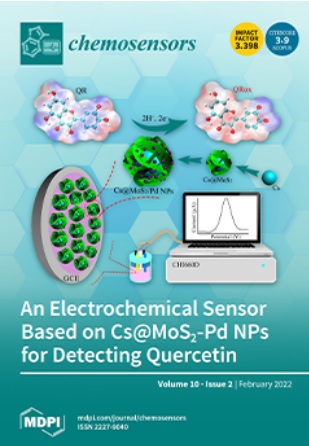In this work, a system consisting of two resistive sensors working in tandem to detect and quantify the acetic acid released during the degradation of cellulose acetate-based ancient cinematographic and photographic films is presented. Acetic acid must be constantly monitored to prevent reaching concentrations at which autocatalytic degradation processes begin. The sensors are constituted by a thin layer of metal oxide (tungsten oxide and tin oxide) deposited over an interdigitated electrode capable of being heated, chosen to maximize the array response towards acetic acid vapors. The signals obtained from the sensor array are mathematically processed to reduce the background signal due to interferent gases produced during degradation of ancient cinematographic films. The sensor array reported a LOD of 30 ppb for acetic acid, with a linearity range up to 30 ppm. Finally, the sensor array was tested with different cinematographic and photographic film samples made of cellulose acetate, whose degradation state and acetic acid production was validated using the conventional technique (A-D strips). The presented array is suitable for remote monitoring large number of films in collections since, compared to the official technique, it has a lower detection limit (30 ppb vs. 500 ppb) and is much quicker in providing accurate acetic acid concentration in the film boxes (15 min vs. 24 h).

